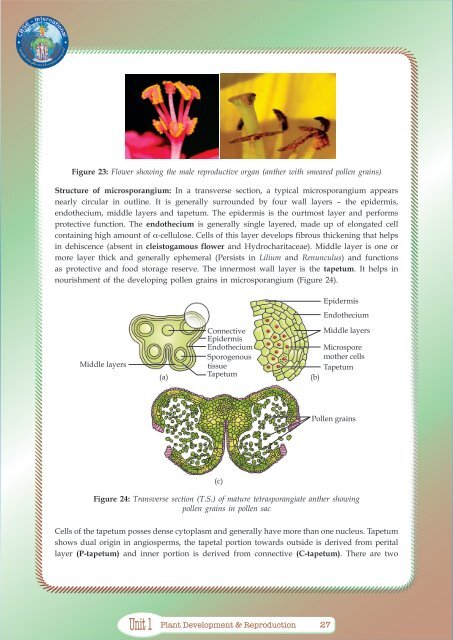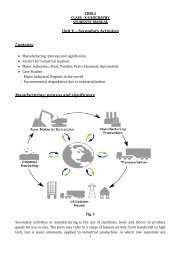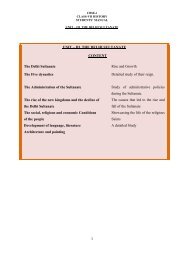PLANT DEVELOPMENT & REPRODUCTION - CBSE International
PLANT DEVELOPMENT & REPRODUCTION - CBSE International
PLANT DEVELOPMENT & REPRODUCTION - CBSE International
You also want an ePaper? Increase the reach of your titles
YUMPU automatically turns print PDFs into web optimized ePapers that Google loves.
Figure 23: Flower showing the male reproductive organ (anther with smeared pollen grains)Structure of microsporangium: In a transverse section, a typical microsporangium appearsnearly circular in outline. It is generally surrounded by four wall layers – the epidermis,endothecium, middle layers and tapetum. The epidermis is the ourtmost layer and performsprotective function. The endothecium is generally single layered, made up of elongated cellcontaining high amount of α-cellulose. Cells of this layer develops fibrous thickening that helpsin dehiscence (absent in cleistogamous flower and Hydrocharitaceae). Middle layer is one ormore layer thick and generally ephemeral (Persists in Lilium and Renunculus) and functionsas protective and food storage reserve. The innermost wall layer is the tapetum. It helps innourishment of the developing pollen grains in microsporangium (Figure 24).EpidermisEndotheciumMiddle layers(a)ConnectiveEpidermisEndotheciumSporogenoustissueTapetum(b)Middle layersMicrosporemother cellsTapetumPollen grains(c)Figure 24: Transverse section (T.S.) of mature tetrasporangiate anther showingpollen grains in pollen sacCells of the tapetum posses dense cytoplasm and generally have more than one nucleus. Tapetumshows dual origin in angiosperms, the tapetal portion towards outside is derived from peritallayer (P-tapetum) and inner portion is derived from connective (C-tapetum). There are twoUnit 1 Plant Development & Reproduction 27








